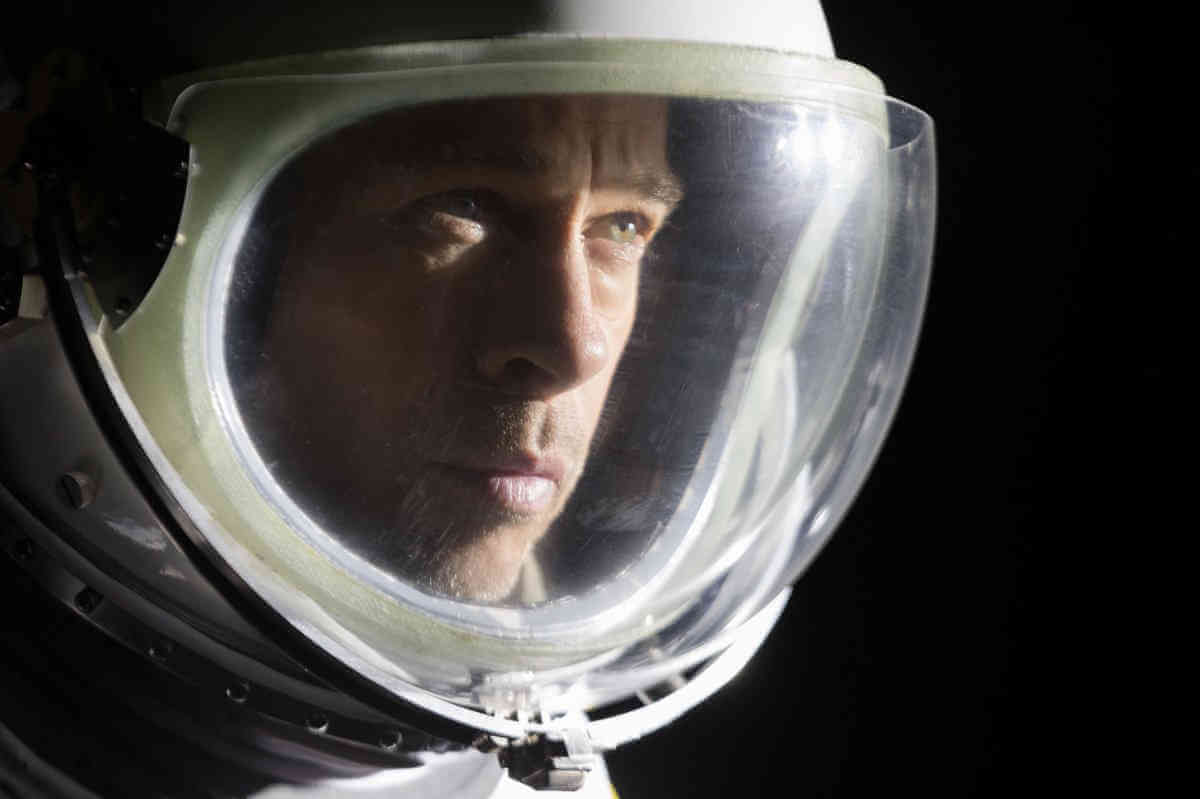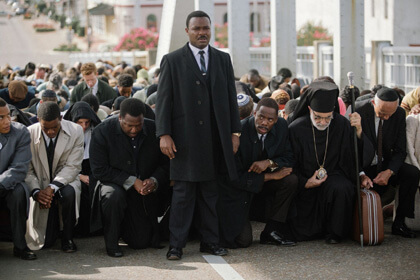For science fiction, James Gray’s “Ad Astra” has little interest in “world-building” as it’s usually thought about. It takes place in a nebulous “near-future” whose details are faintly sketched in. CNN and the BBC are still broadcasting despite cosmic rays leading to a surge that kills 43,000 people, and there’s a Subway sandwich shop in space. The moon is as banal and lacking in cosmic wonder as a typical airport. And as every review is obliged to mention, man-eating baboons make a cameo appearance.
But in a different sense, “Ad Astra” is all about world-building. Like the horror films of Jennifer Kent and Ari Aster, “Ad Astra” is more concerned with creating an elaborate metaphor for the emotions of family life than ticking off genre bona fides.
Let’s face reality: 20th Century Fox would never give James Gray $80 million to make a film in which Brad Pitt drives from New York to Oregon in search of the father who went missing when he was as a child. The sci-fi elements make this palatable to a mainstream audience — at least in theory.
Major Roy McBride (Pitt) long believed that his father Cliff (Tommy Lee Jones) died on a mission to the solar system’s outer reaches. Early in “Ad Astra,” he learns from his bosses at the government agency SpaceCom that Cliff is still alive. They believe Cliff is coordinating the cosmic ray attacks damaging the Earth from Neptune and send Roy on a mission, first to the Moon and then to Mars. A few odd incidents of violence happen along the way. After that point, Roy decides to cut off contact with Earth and becomes obsessed with the idea of re-connecting with his father.
Roy is the only person in “Ad Astra” who seems real. The whole film is born from his subjectivity. We get to hear him relate his thoughts in voice-over constantly. Unfortunately, this means it shares Roy’s taciturn machismo, becoming another film where “the wife” is the main female character. Actors as talented as Donald Sutherland and Natasha Lyonne get little to do, with Ruth Negga faring best with her small role as a woman who lives on Mars. But even his father, who is the only other person to get more than a few minutes of screen time, feels like a construct drawn from Gray’s love of “Apocalypse Now.” Tommy Lee Jones’ performance delivers Kurtz’s craziness but doesn’t sell his menace. The two are literally tethered together in one scene.
Gray’s first three films lingered in the shadow of New Hollywood, especially Scorsese and Coppola, even if their inspiration came from the real experiences of himself and his family. In a recent New Yorker profile by Nathan Heller, he said that he turned from the autobiographical to the personal with his fourth film, “Two Lovers,” and I’d pick that as the point where he became a major director. The tormented relationship to fatherhood in the narrative of “Ad Astra” is mirrored by the film’s own use of “Apocalypse Now” as a model. Ironically, if the ‘70s films Gray admires were once meant as gestures of rebellion, he now comes across a dutiful son drawing from them when mainstream American cinema suffers from an amnesia about its past.
It’s hard to make a “thinking person’s science-fiction film” outside the long shadows of “2001:A Space Odyssey” and Andrei Tarkovksy’s “Solaris.” While Gray has touted “Ad Astra” as the most realistic depiction of space travel ever made, he doesn’t completely get out from under these precursors. Whether or not this imagery’s implications were intentional, Roy’s journey through the solar system — and even through tunnels on the Moon and Mars — back to his father places him in spaces that resemble wombs.
As he floats in space, the film creates a montage in which he remembers his father and wife, mixing flashbacks with video footage and placing a heavy emphasis on sound design. His childhood memories melt together with the “historical” images of Cliff and the present-day videos of his wife (Liv Tyler) telling him how distant he’s grown. The experimental quality of this editing is more Malick than Kubrick or Tarkovsky. Hoyte von Hoytema’s beautiful cinematography turns entirely blue or red for certain scenes, but it also captures the inky void just beyond the safe refuge of the planets and spaceships. Max Richter’s score, built on austere strings and electronics, adds to the somber mood, as do the constant, subtle rumblings of Gary Rydstrom’s sound design.
Pitt plays Roy with so much deadpan brooding that he’s never seemed more distant from his days as a “pretty boy” leading man. Now 55, the actor looks his age here. Rather than his performance earlier this year in “Once Upon a Time in Hollywood,” Roy made me think of a far more alienated cousin of FBI agent Bill Tench in the TV series “Mindhunter.” Roy’s actions lead to the death of other characters and he’s repeated his father’s mistakes by pissing off his wife. Yet “Ad Astra” has no desire to pass judgment on him. His arc turns upbeat and redemptive. But the laser-pointed focus and beautiful style bring true emotion and poetry to a simple, well-worn story. At least here, going to space is better than years of therapy.
AD ASTRA | Directed by James Gray | 20th-Century Fox | Opens Sep. 20 citywide

































